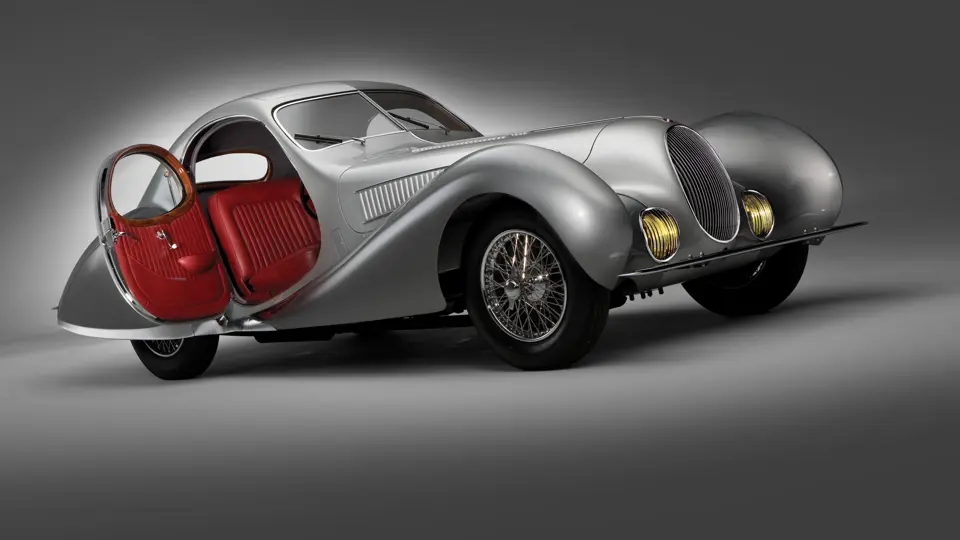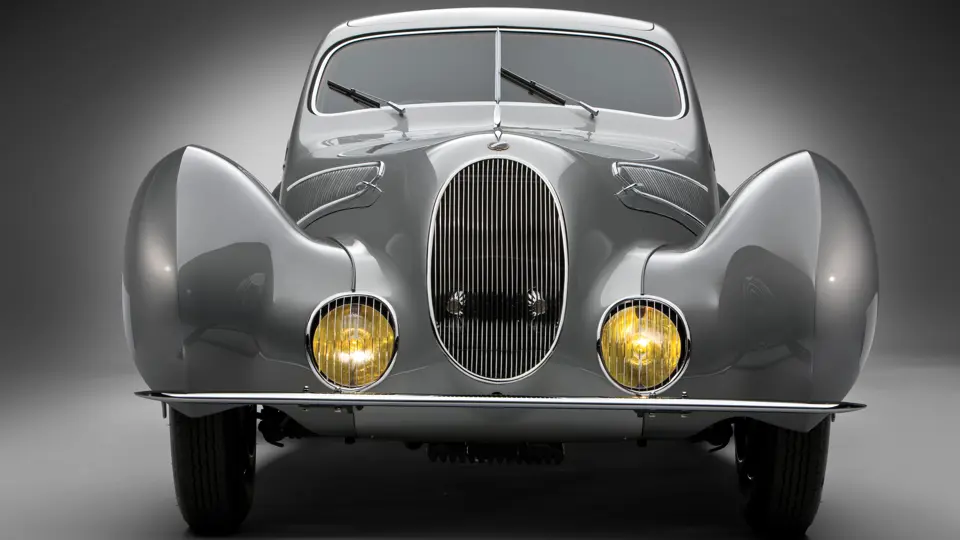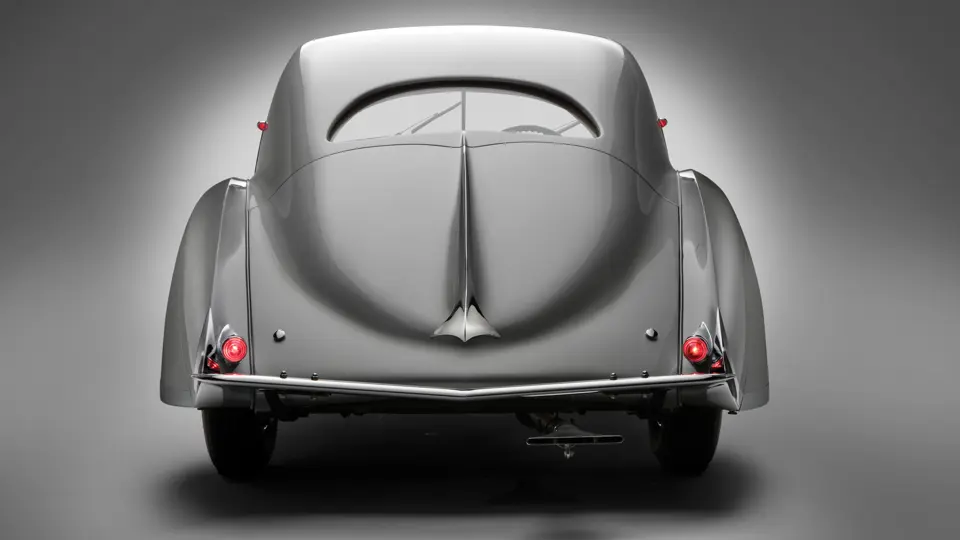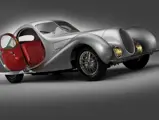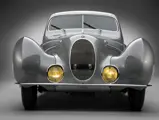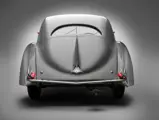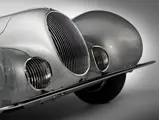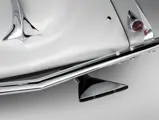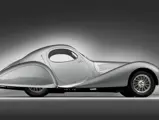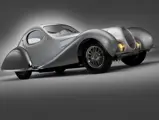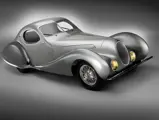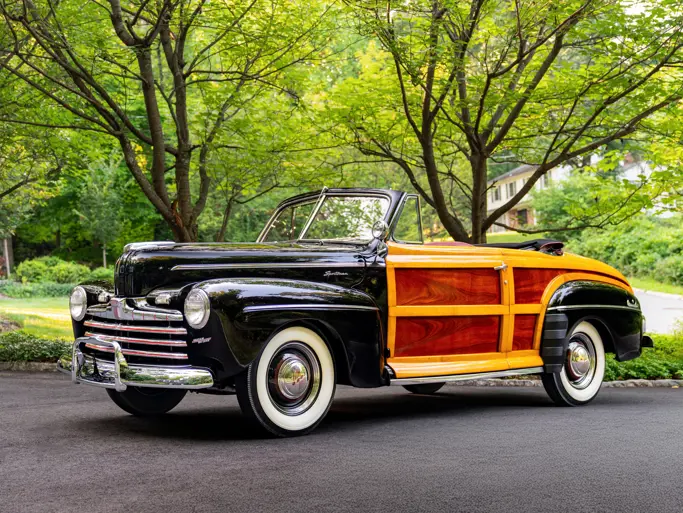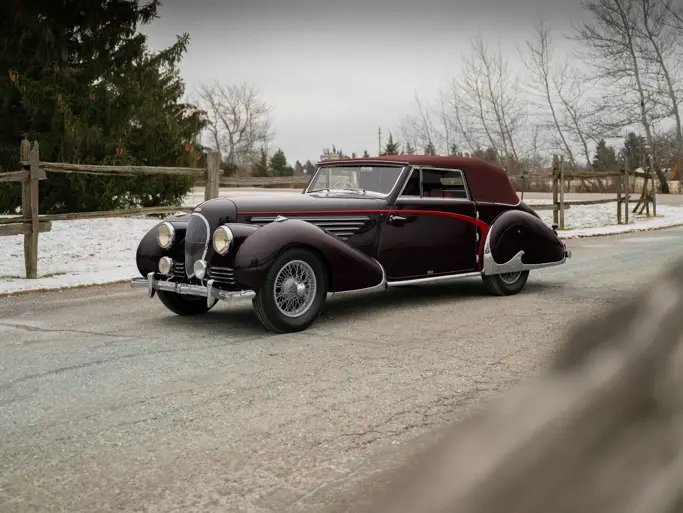140 bhp, 3,996 cc inline six-cylinder engine with hemispherical combustion chambers and triple Stromberg carburettors, Wilson four-speed pre-selector gearbox, independent front suspension with transverse leaf spring, leaf spring and live axle rear suspension, and four-wheel drum brakes. Wheelbase: 2,650 mm (104.33")
- A triple award winner at Pebble Beach in 2009 and Best of Show at Meadow Brook in 2010
- Shown at concours events in period
- Show-quality restoration by RM Auto Restoration
- One of only 11 examples with Second-Series “New York” Figoni coachwork
- Rare Factory sunroof
- Sophisticated race-bred, short-wheelbase T150-C SS Talbot-Lago chassis
The T150-C SS chassis is arguably one of Anthony Lago’s greatest achievements. The “C” stood for competition, a reference to the marque’s racing success, while “SS” signified “super sports,” the short 2.65-metre wheelbase version of the competition chassis. Its race-bred six-cylinder engine featured an overhead valvetrain, hemispherical combustion chambers, high compression, triple carburettors and a large-capacity oil pan. Other competition items included a punched handbrake lever and a dual braking system. Intended for sporting two- or three-place coachwork, it was also the lightest chassis and offered exceptional road holding by virtue of its advanced independent front suspension, plus excellent braking.
Racing success certainly enhanced the appeal; it was this demand, combined with Lago’s collaboration with the Figoni et Falaschi coachbuilding firm, that resulted in the creation of what many believe to be the most beautiful automobiles ever conceived.
Figoni et Falaschi: Masters of Elegance
There is little doubt that the era of exuberant French coachwork precipitated a tidal change in automotive design. Gone were the largely functional forms of the 1920s and early 1930s, replaced by the fanciful curves and sensuous lines that ushered in the era of the automobile as art form. Although others were versed in the style to one degree or another, the Parisian firm of Figoni et Falaschi remains widely regarded as the truest innovator of the groundbreaking new look.
Joseph Figoni began to turn his attention to Talbot-Lago. In 1937, Figoni and Lago signed an agreement to work together exclusively, and for a time they did. The finest product of their collaboration was the landmark “Teardrop” or “goutte d’eau coupé,” with just 16 ultimately produced in two series. Regardless of the series, each Teardrop was coachbuilt, and consequently there are minor and even major variations from one car to another. For example, two were built with skirted front and rear wheels, some featured bullet headlamps between the radiator grille and fenders, while others featured headlamps recessed behind chrome grilles.
The first series, named “Jeancart” after the first patron of the design, was a lovely aerodynamic coupé with a slight notchback design. Five were built, with three on the T150-C SS chassis, one on the three-litre T23 chassis and one on the T150-C Lago Speciale long-wheelbase chassis.
The second series, débuted at the New York Auto Show and named “Model New York” in honour of the occasion, was quite similar in concept but featured an uninterrupted fastback profile. While not all such cars were officially designated “Model New York” by Figoni, all share the same appearance and characteristics, and consequently they are usually listed together by marque experts.
Chassis no. 90112: Speed and Beauty
Perfectly proportioned, these Teardrop Coupés mark the peak of the French streamlined design movement of the 1930s. Chassis 90112, the wonderful example offered here, is one of only 10 examples of the Style 9220 Model New York built on the short T150-C SS chassis (one additional car was built on the T23 Baby chassis). It is also one of just three surviving examples fitted from new with a factory-fitted sunroof. One of the most striking aspects of this design is the pair of graceful chrome grilles behind which the headlamps are hidden. A classic Figoni detail, it graces just a handful of the surviving cars.
Provenance
In the world of French cars, chassis 90112 stands as one of the best Teardrops, having a continuous history from new and no history of fire, accident or deterioration. All of its major components remain intact and together, including its chassis, engine and Figoni coachwork. It was ordered new by M. Troussaint, Director of the Casino at Namur, Belgium, and delivered to him in May 1938. Notably, it was shown at the 1939 Brussels Concours d’Elegance, and it was presented at the 1939 Concours d’Elegance in Deauville, France.
With the onset of war and the fall of Belgium in the face of the German Blitzkrieg in May 1940, 90112 disappeared from view but eventually resurfaced in storage during the 1950s, prior to its acquisition by the Belgian royal family. Following the death of the King, a family member, who kept the car at their villa in Belgium, apparently inherited it. At some point in time, 90112 had been partially disassembled, in preparation for restoration, but the work was never undertaken, making 90112 one of the most original unrestored examples of its kind when the present owners acquired it during the mid-2000s.
Restoration
RM Auto Restoration was tasked with returning 90112 to concours-quality condition. The project began with a thorough inventory and dismantling of the remarkably complete car. Most of the original wooden framework supporting the coachwork survived the intervening decades, and during the restoration, every joint was painstakingly dismantled, cleaned and refastened. Where wood rot had appeared, primarily in the lower portions of the doors, new pieces were fabricated in the exact manner of the originals and carefully installed. While the sheet-metal was complete, previous repairs were poor. Although much of the original sheet-metal was saved, some metalwork was required, with identical materials and workmanship used to ensure the faithful restoration of the coachwork.
The frame remained excellent, requiring little more than a thorough cleaning and refinishing. Similarly, the original chassis components were rebuilt and reinstalled, and every drivetrain component was rebuilt and cosmetically refurbished. Extensive research ensured that each detail was faithful to the original materials and finishes. To this end, several separate trips to visit other cars were made in order to photograph and document original features for authenticity.
The interior trim and upholstery are identical in form and pattern to the originals. The wooden trim was carefully repaired and properly refinished, and the carpet, headliner and upholstery were painstakingly cut and fitted to match the original patterns. Each instrument was restored, and a new electrical wiring harness was fabricated for the complete car. Each light, bezel and lens were carefully rebuilt and reinstalled. Hundreds of hours were dedicated to careful block sanding and preparation for painting. The finish is a correct shade of silver accented with a subtle grey two-tone.
In testament to the authenticity and quality of its restoration, 90112 earned no fewer than three awards at the 2009 Pebble Beach Concours d’Elegance, including the J.B. and Dorothy Nethercutt Most Elegant Closed Car Trophy, First in Class J-2: European Classic Closed and the Art Center College of Design Award. In 2010, 90112 continued its winning ways by earning the Breitling Watch Award for the Car of Timeless Beauty at Amelia Island in March, followed by Best in Class: European and Best of Show at the Meadow Brook Concours d’Elegance in July.
Any surviving Talbot-Lago is a rare and delightful thing, particularly when it has been restored to such a high level. 90112 is exceptionally rare and attractive and is sure to garner invitations to the world’s most exclusive concours events, where its combination of performance and breath-taking “teardrop” coachwork is sure to impress.
140 cv, motore 6 cilindri in linea di 3.996 cc con camere di combustione emisferiche e tre carburatori Stromberg, cambio a quattro marce con pre-selettore Wilson, sospensione anteriore a ruote indipendenti con balestra trasversale, assale posteriore rigido con balestra, freni a tamburo sulle quattro ruote. Passo: 2.650 mm (104.33")
- Vincitrice di tre premi a Pebble Beach nel 2009 e Best of Show a Meadow Brook nel 2010
- Esibita in concorsi anche quando era nuova
- Restaurata in condizioni da concorso da RM Auto Restoration
- Uno dei soli 11 esemplari della seconda serie "New York” con carrozzeria Figoni
- Raro esemplare prodotto con il tetto apribile
- Sofisticato esemplare sul telaio a passo corto Talbot-Lago T150-C SS, nato per le corse
Si può dire che il telaio T150-C SS é stato uno dei più grandi successi di Antonio Lago. La “C” sta per competizione, con riferimento ai successi sportivi della casa, mentre “SS” sta per “super sports”, con riferimento alla versione a passo corto (da 2,65 metri) del telaio da competizione. Il motore 6 cilindri da competizione presenta il comando valvole in testa, camere di scoppio emisferiche ad alta compressione, tre carburatori e coppa olio di grande capacità. Altri particolari da corsa sono la leva del freno a mano alleggerita e il doppio sistema frenante. Progettato per carrozzerie sportive a due o tre posti, è il telaio più leggero della serie ed offre un'eccezionale tenuta di strada, grazie alle avanzate sospensioni anteriori a ruote indipendenti, e un'ottima frenata.
Il successo sportivo sicuramente lo rese più attraente; e fu questo impegno, combinato con la collaborazione fra Lago e la Carrozzeria Figoni et Falaschi, che portò alla nascita di quella che molti ritengono sia la più bella automobile mai concepita.
Figoni et Falaschi: Maestri d'Eleganza
Ci sono pochi dubbi sul fatto che l'era degli esuberanti carrozzieri francesi abbia portato ad un cambio epocale nello stile automobilistico. Le forme puramente funzionali degli anni Venti e dei primi anni Trenta erano state superate, sostituite dalle fantasiose curve e sensuali linee che inaugurarono l'era dell'automobile come forma d'arte. Sebbene anche altri carrozzieri fossero versati per questo stile ad un certo livello, i parigini Figoni et Falaschi sono considerati dai più come i veri innovatori del nuovo stile.
Giuseppe Figoni aveva già posto la sua attenzione sulla Talbot-Lago, quando, nel 1937, lui e Lago sottoscrissero un accordo di esclusiva, che durò per qualche tempo. La più bella creazione nata dalla loro collaborazione fu l'immortale coupé "Goutte d’eau" (Goccia d'acqua) del quale furono costruiti solo 16 esemplari, distinti in due serie. Anche se era una serie, ogni esemplare della "Goutte d'eau" era costruito a mano e di conseguenza ci sono piccole e, a volte, anche grandi differenze fra un esemplare e l'altro. Per esempio, due vetture vennero costruite con entrambe le ruote anteriori e posteriori coperte, alcune hanno fanali a goccia scoperti posizionati fra la griglia del radiatore e i parafanghi e altre hanno i fanali nascosti da griglie cromate.
La prima serie, denominata “Jeancart” dal nome dell'acquirente del primo esemplare, era un attraente coupé aerodinamico con l'ingombro del baule leggermente visibile (che gli americani definiscono "notchback"). Ne furono costruiti cinque esemplari, tre sul telaio T150-C SS chassis, uno sul telaio T23 con il motore 3 litri, e uno sul telaio a passo lungo T150-C Lago Speciale.
La seconda serie, presentata al Salone dell'Auto di New York e per questo denominata “Modello New York”, era del tutto simile nel concetto alla precedente ma con un profilo posteriore ininterrotto (definito "fastback"). Anche se non tutti gli esemplari furono ufficialmente chiamati da Figoni “Modello New York”, tutti condividono la stessa linea e le stesse caratteristiche, e di conseguenza sono sempre elencati insieme dagli esperti della marca.
Il telaio n. 90112: Velocità e Bellezza
Perfettamente proporzionati, i coupé "Goutte d'eau" rappresentano la massima espressione dell'aerodinamico stile francese degli anni Trenta. Il telaio 90112, la splendida vettura offerta, è uno dei soli 10 esemplari del "Modèle New York dessin n° 9220", costruiti sul telaio a passo corto T150-C SS (un ulteriore esemplare fu costruito sul telaio T23 Baby). E' anche uno dei tre esemplari ancora esistenti nati in fabbrica con il tetto apribile. Uno dei più attraenti aspetti di questa linea sono le due leggiadre griglie cromate dietro le quali sono celati i fanali. Un particolare classico di Figoni, si ritrova solo su poche delle vetture ancora esistenti.
Provenienza
Fra le vetture francesi, il telaio 90112 rappresenta una delle migliori "Goutte d'eau", avendo una storia continua fin da nuova e non avendo subito incendi, incidenti o altri danni importanti durante la sua esistenza. Tutti i suoi maggiori componenti sono intatti e presenti, compresi il telaio, il motore e la carrozzeria di Figoni. Essa fu ordinata nuova dal signor Troussaint, direttore del casinò di Namur, in Belgio, che la ritirò nel maggio 1938. Da notare che nel 1939 la vettura fu esibita ai Concorsi d'Eleganza di Bruxelles e di Deauville, in Francia.
Con lo scoppio della guerra e la conseguente caduta del Belgio all'attacco tedesco del maggio 1940, la 90112 scomparve dalla circolazione, per riapparire negli anni Cinquanta e quindi essere acquistata dalla famiglia reale belga. Sembra che alla morte del re, la vettura fu ereditata da un membro della famiglia che l'aveva tenuta nella sua villa in Belgio. Ad un certo momento, la 90112 era stata parzialmente smontata in previsione di un restauro che non fu mai iniziato; questo la rese uno dei più originali e mai restaurati esemplari della serie quando fu acquistata a metà degli anni 2000 dall'attuale proprietario.
Il restauro
RM Auto Restoration fu incaricata di far ritornare la 90112 in condizioni da concorso. Il lavoro iniziò con il totale smontaggio della vettura, straordinariamente completa, e l'inventario delle parti. La maggior parte dell'originale intelaiatura in legno di supporto alla carrozzeria era sopravvissuto allo scorrere del tempo e durante il restauro ogni giunzione fu accuratamente smontata, pulita e rinforzata. Dove il legno si era deteriorato, soprattutto nella parte inferiore delle portiere, fu sostituito con parti accuratamente costruite come nel passato e attentamente montate. Sebbene i pannelli di lamiera fossero tutti presenti, alcuni di essi erano stati in precedenza riparati in modo non corretto. Molti di loro sono stati salvati, ma per alcuni è stata necessaria la sostituzione, effettuata con pannelli di identico materiale e lavorazione, al fine di assicurare un fedele restauro della carrozzeria.
Il telaio era in eccellenti condizioni e ha richiesto poco più di un'accurata pulizia e lavori di dettaglio. Similmente, i componenti del telaio originale furono restaurati e rimontati, così come ogni componente della ciclistica fu restaurato, anche esteticamente. Accurate ricerche hanno assicurato che ogni dettaglio fosse fedele all'originale sia come materiale sia come finitura. Per questo motivo, sono stati necessari diversi viaggi per visionare altri esemplari, al fine di fotografare e documentarsi sui particolari originali per rispettare l'autenticità della vettura.
I pannelli interni e la tappezzeria sono identici per forma e materiali agli originali. Le finiture in legno sono state attentamente riparate e finite correttamente e i tappetini, le bordature e la tappezzeria accuratamente tagliati e fissati per rispettare i modelli originali. Ogni strumento è stato restaurato ed è stato costruito un nuovo completo impianto elettrico. La fanaleria e i vetri sono stati ricostruiti e rimontati. Centinaia di ore sono state spese per l'accurata preparazione della carrozzeria prima della verniciatura: una corretta tonalità di argento con due delicati toni di grigio.
A testimonianza dell'autenticità e della qualità del restauro, la 90112 ha vinto ben tre premi al Concorso d'Eleganza di Pebble Beach del 2009: il trofeo J.B. e Dorothy Nethercutt per la Vettura Chiusa più Elegante, la vittoria nella Classe J-2 Vetture Europee Chiuse e il premio dell'Art Center College of Design. Nel 2010, la 90112 ha continuato a mietere successi: il premio Breitling Watch per la Vettura dalla Bellezza Senza Tempo e la vittoria di classe ad Amelia Island in marzo; la vittoria fra le vetture europee e il Best of Show al Concorso d'Eleganza di Meadow Brook in luglio.
Ogni Talbot-Lago esistente è un oggetto raro e delizioso, in modo particolare quando è stata restaurata ad un così alto livello. La 90112 è eccezionalmente rara e attraente, sicuramente in grado di ricevere inviti ai più esclusivi concorsi del mondo, dove la combinazione fra le prestazioni e la carrozzeria mozzafiato "Goutte d'eau" impressioneranno tutti coloro che avranno l'opportunità di ammirarla.
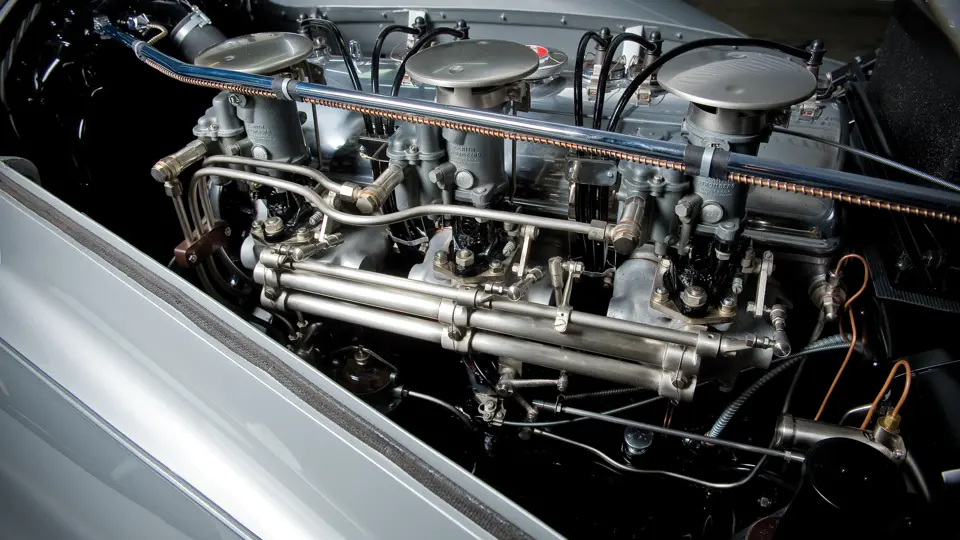
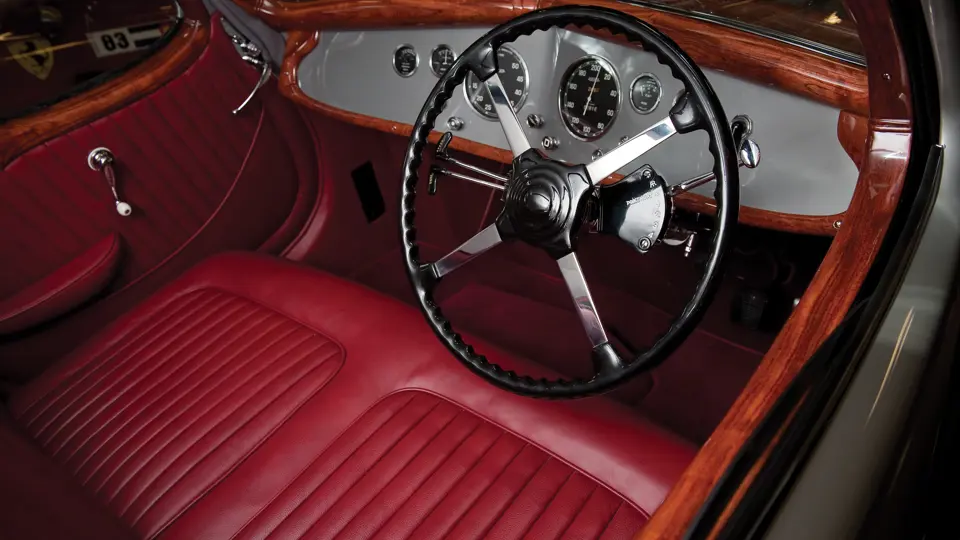
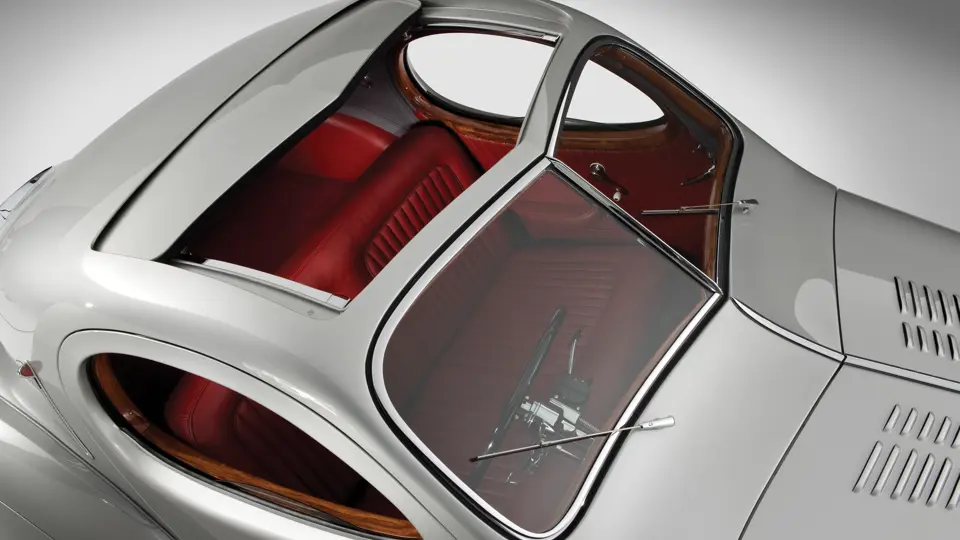

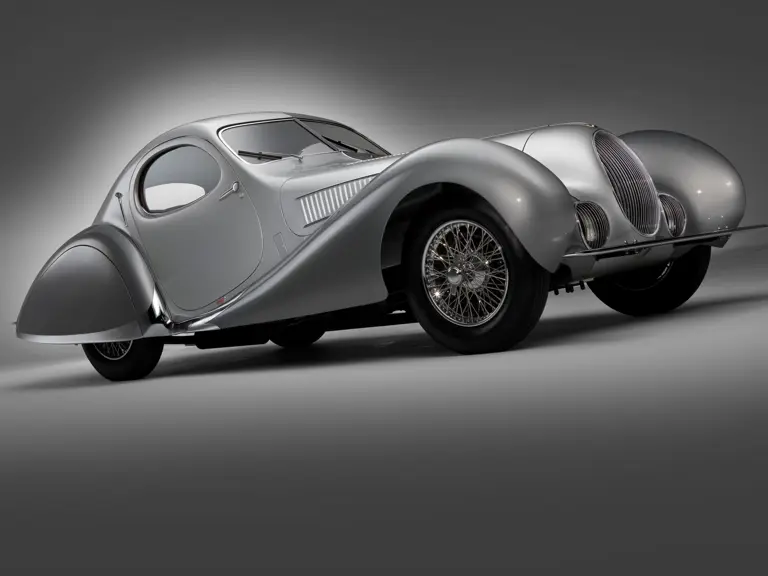
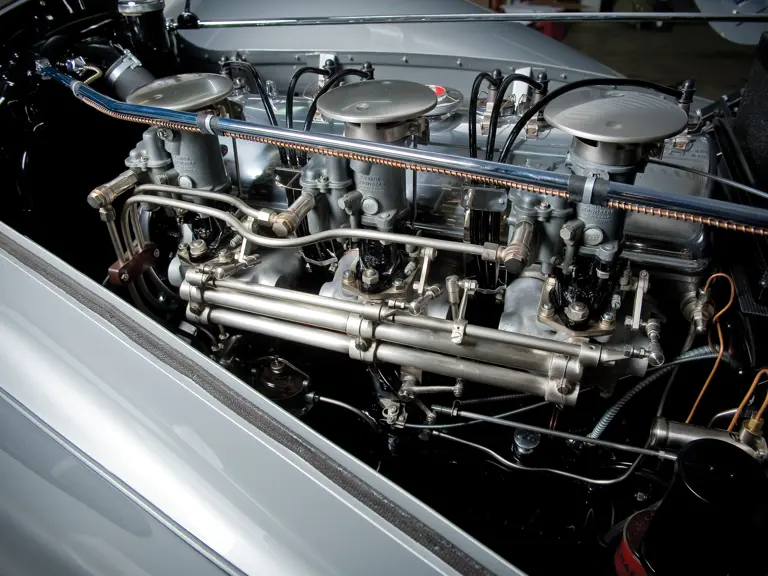
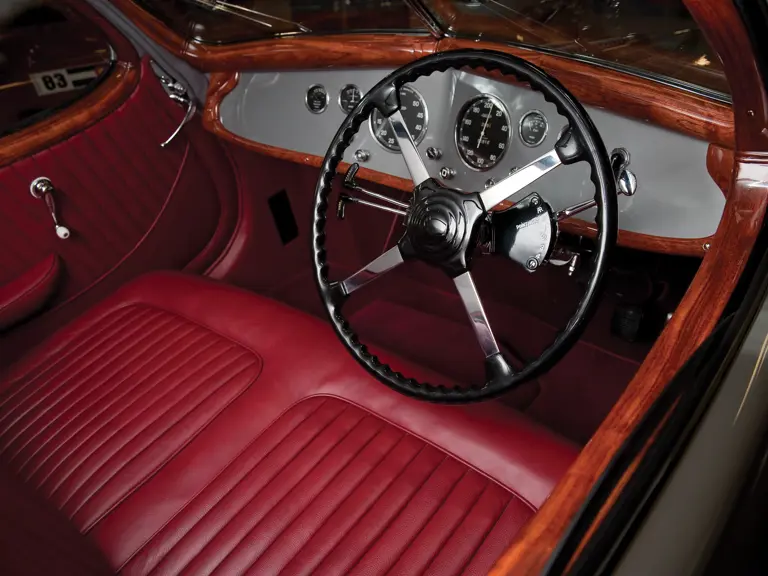
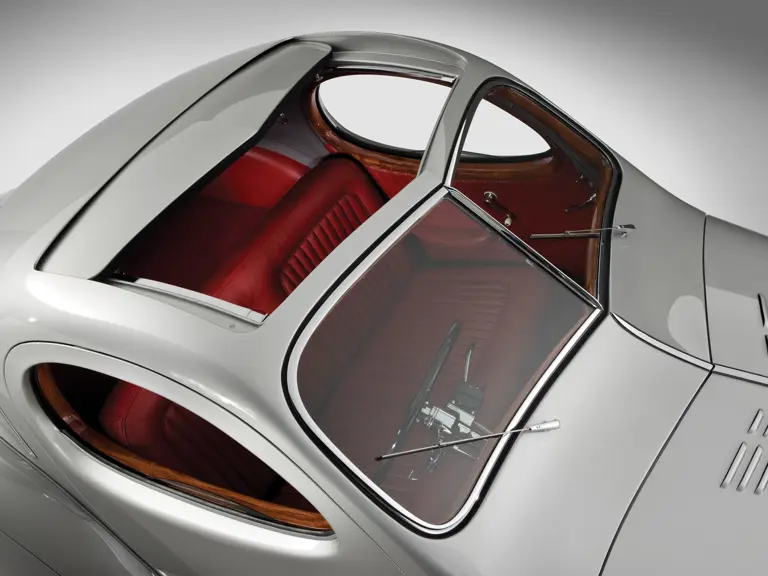
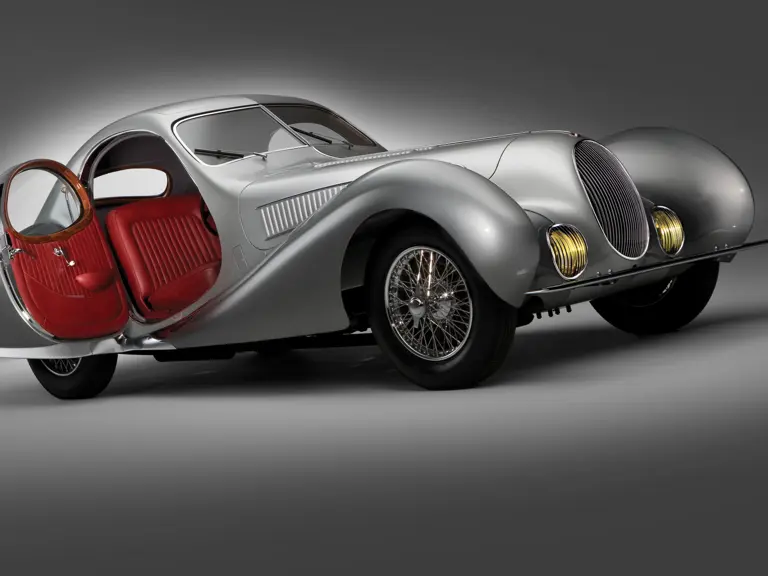
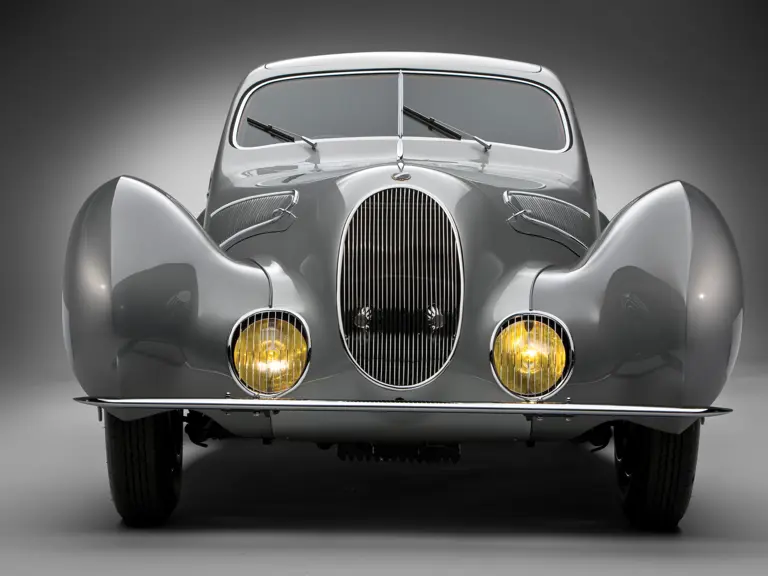
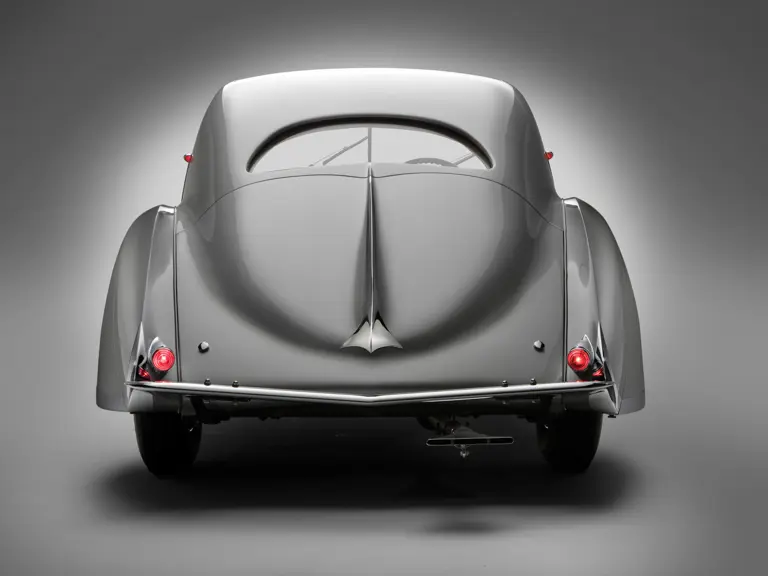

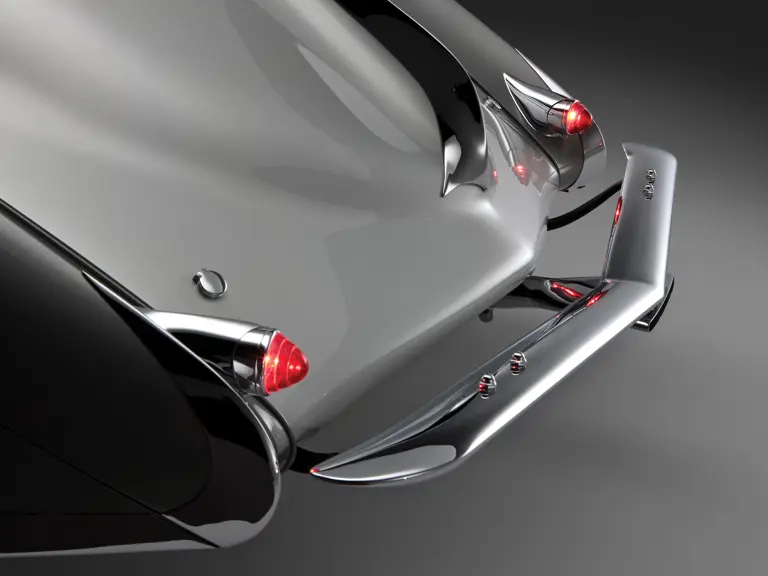
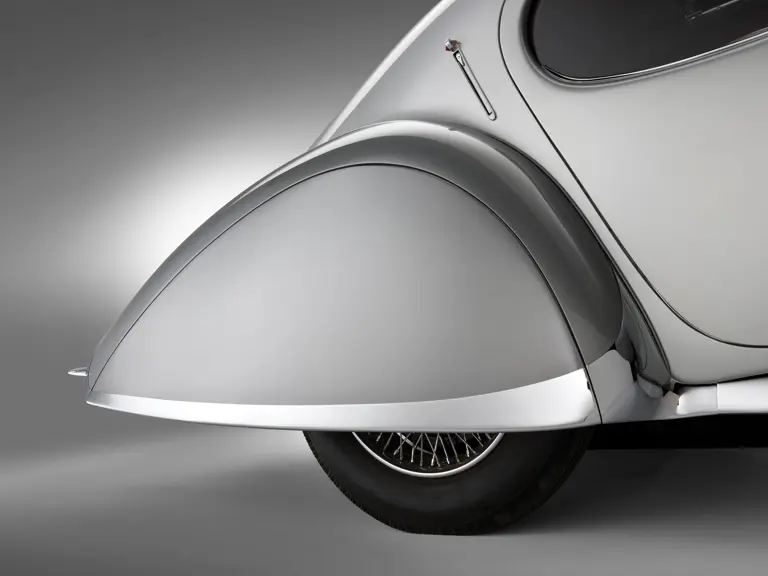

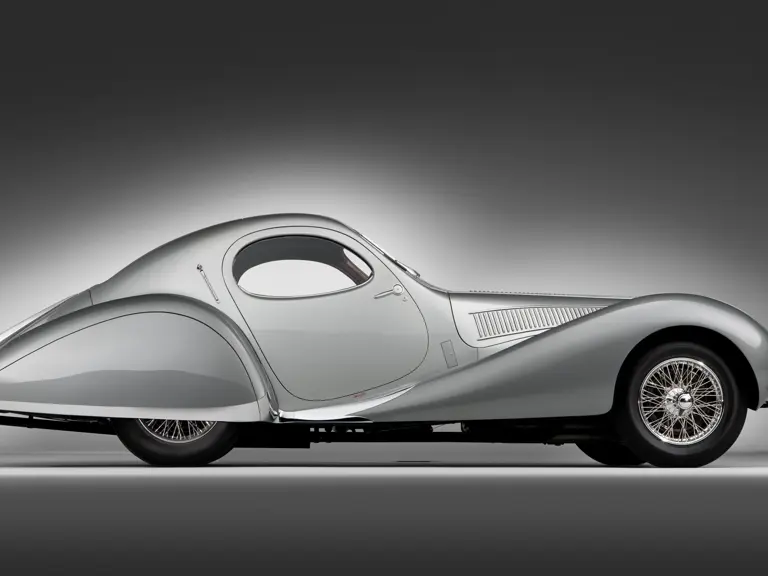

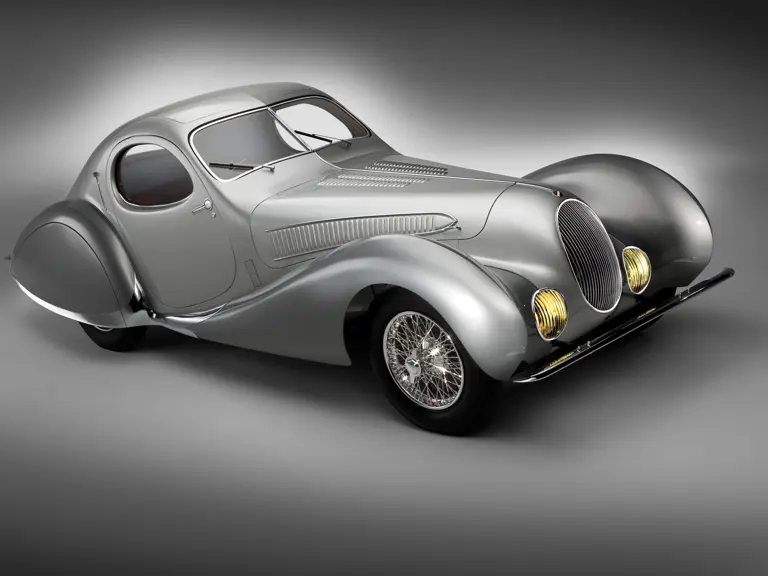

 | Cernobbio, Italy
| Cernobbio, Italy
